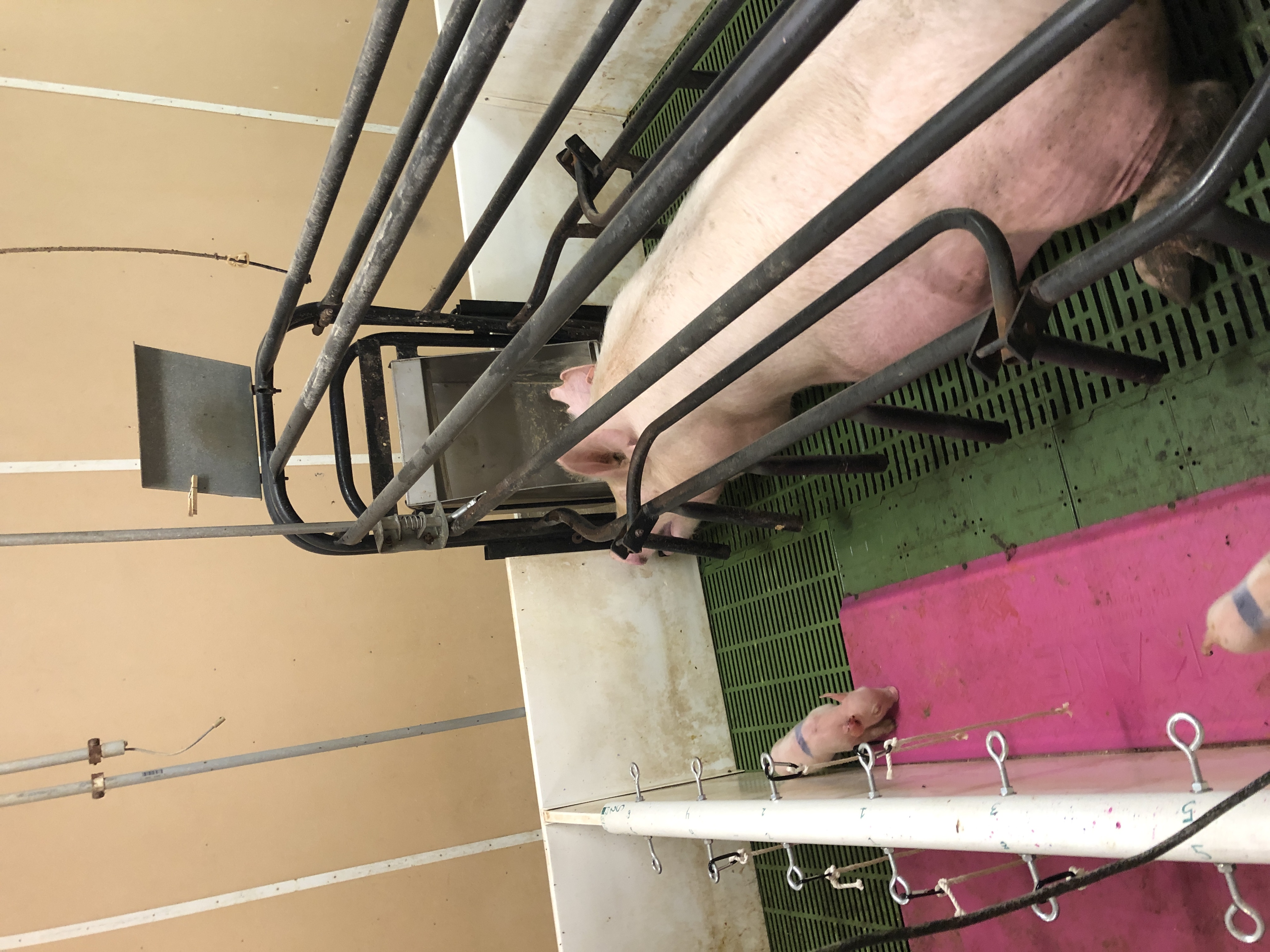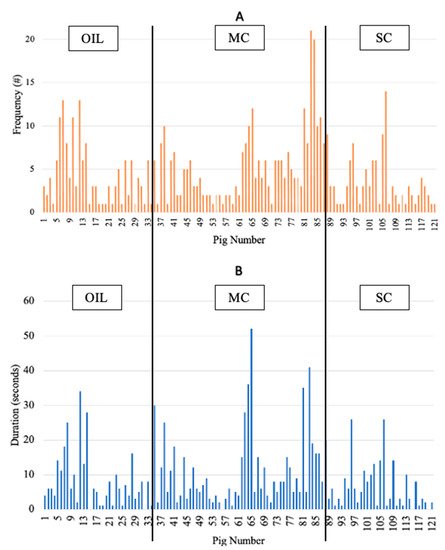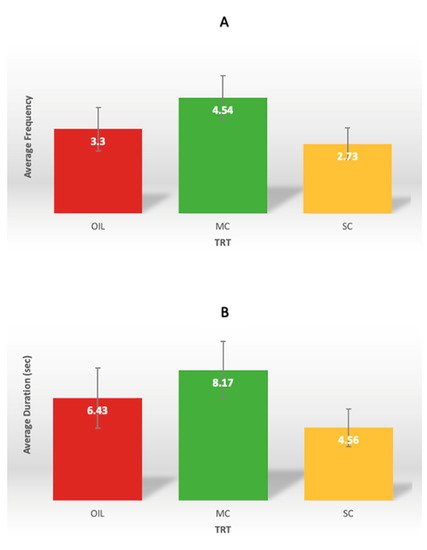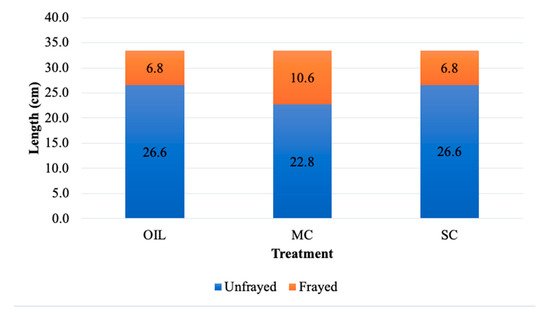In the United States swine industry, preweaning mortality represents the highest mortality rate of any production phase, nearly half attributed to crushing. The overarching aim of this entry was to determine if enrichment ropes would entice neonatal piglets away from the sow and reduce preweaning mortality.
- environmental enrichment
- piglet
- livability
- attractants
- neonate
1. Introduction
2. Enrichment and Treatments
The enrichment device consisted of a polyvinyl chloride (PVC) pipe placed on the divider between two farrowing stalls, from which up to seven cotton ropes were suspended (Figure 1). Authors hypothesized that an absorbent hanging cotton rope dipped in piglet-relevant attractants would be an effective enrichment. Therefore, sows and their litters were assigned to one of three treatments: (1) sunflower oil (OIL, n = 7 sows, 41 piglets), (2) semiochemical (SC, n = 8 sows, 51 piglets), or (3) milky cheese (MC, n = 11 sows, 69 piglets). Treatment ropes were first applied to the stall at the start of Day 2, replaced with a new rope and fresh treatment at the start of Days 3, 4 and 5, and removed at the beginning of Day 6. Treatments were applied by soaking the bottom 20 cm of each rope in the treatment solution for 15 s, and then hanging the rope to air dry for 10 min. Ropes were applied to the stall in one of the seven numbered locations on the enrichment device.

Figure 1. Photograph of the PVC (polyvinyl chloride) device used to hang enrichment ropes. The device, which measured 1.7 m in length, had a 2.7 cm cutout taken out of the bottom of the PVC. This cutout was placed over the top of the 2.5 cm thick plastic siding between two farrowing stalls. In this figure, the rope/eyebolt locations visible (from bottom to top of the photo) are 5, 3, 1, 2, 4, 6.
3. Behavior


Overall, the high level of interaction by piglets in the Day 2 environment after farrowing is an important and novel finding, as it suggests that even at this young age, piglets are attentive to and interacting with their environments. Piglet interest in the ropes on Day 2 suggests that environmental enrichments are practical for piglets even at this young age.

4. Mortality and Weight Gain
| Treatments 3 | Total | |||
|---|---|---|---|---|
| OIL | SC | MC | ||
| # of sows | 7 | 8 | 11 | 26 |
| # of piglets on Day 2 | 41 | 51 | 69 | 161 |
| Crushed + milk | 1 | 1 | 6 | 8 |
| Crushed + no milk | 0 | 0 | 0 | 0 |
| Not crushed + milk | 3 | 1 | 1 | 5 |
| Not crushed + no milk | 0 | 2 | 1 | 3 |
| Total # piglets dead | 4 | 4 | 8 | 16 |
Piglets in the MC had the lowest percent mortality while the enrichment was in the stall (p = 0.01), piglets in SC had the lowest percent mortality after the enrichment was removed (p < 0.0001), and piglets in SC had the lowest percent mortality over the entire preweaning period affected by the rope enrichment (Days 2 to weaning; p = 0.03; Table 2)
| Treatments 1 | p-Value | |||
|---|---|---|---|---|
| OIL | SC | MC | ||
| Number of sows | 7 | 8 | 11 | |
| Average sow parity | 4 | 3.8 | 4 | |
| Average litter size (#) | 6.3 ± 3.09 | 8.0 ± 4.00 | 8.6 ± 3.21 | |
| Average weaning age (d) | 20.3 ± 1.89 | 20.1 ± 1.96 | 19.6 ± 2.66 | |
| Litter Body Weight (kg) | ||||
| Average birth weight | 3.0 ± 0.48 | 3.0 ± 0.70 | 3.3 ± 0.38 | |
| Average weaning weight | 12.4 ± 2.89 | 12.3 ± 2.20 | 11.9 ± 2.94 | |
| Average weight gain | 9.5 ± 1.01 | 9.2 ± 0.98 | 8.4 ± 0.84 | 0.71 |
| Litter Mortality (%) 2 | ||||
| Days 2 to 5 3 | 10.7 ± 1.29 a | 9.2 ± 1.07 a | 6.1 ± 0.74 b | 0.01 |
| Days 6 to weaning 4 | 7.4 ± 1.03 a | 4.0 ± 0.65 b | 10.8 ± 0.98 c | <0.0001 |
| Days 2 to weaning 5 | 19.2 ± 1.71 a | 13.7 ± 1.29 b | 18.2 ± 1.27 a | 0.03 |
1 Ropes dipped in OIL = sunflower oil; SC = semiochemical; MC = milky cheese; 2 average percent mortality (%), calculated as the average number of piglets dead at the end of the time period / the average number of piglets alive at the beginning of the time period × 100; 3 Days 2 to 5, when enrichment ropes were in the stall; 4 Days 6 to weaning, after enrichment ropes were removed from the stall. Weaning age ranged from 15 to 22 days of age; 5 Days 2 to weaning mortality, defined as all piglets that were alive at rope placement and dead before weaning; a, b, c Different superscripts within a row indicate significance at p ≤ 0.05.
There are concerns that placement of EE could interfere with piglet nursing behavior; however, of the 75% of piglets interacting with the ropes on Day 2, none died. This is an interesting finding that may warrant further investigation. Of the 16 piglets that died during the study period, half were attributed to crushing, and only three did not have milk present in their stomachs. Although half of the piglets that died were assigned to the MC treatment, this treatment group had more sows and larger litters.
While piglets were observed interacting with the EE, an important unanswered question is how often and how long does a piglet need to interact with the enrichment to receive benefits in terms of livability, growth, and/or welfare? The high individual variation both within and between litters could provide a starting point, and future studies investigating the relationship between individual piglet enrichment use and performance measures are warranted. In this study, although there was not a significant difference across treatments in piglet rope interactions, there was an effect of rope treatment on piglet mortality. It would be recommended that future work measure piglet distance from and time spent near the enrichment ropes, because some piglets may not directly interact with the ropes but still may be drawn away from the sow, thus reducing the risk of crushing.
5. Conclusions
When provided with environmental enrichment designed with neonatal piglet anatomy and behavior considerations, piglets showed high individual variation in their investigations of enrichment. A total of 75% of piglets touched the ropes at least once on Day 2, indicating that neonate piglets are attentive to their environment early in life. There was a high variation in frequency and duration of individual piglet investigations across all treatments. The milky cheese enrichment was investigated the most by piglets and had the lowest mortality during the enrichment period (Days 2 to 5). This proof-of-concept study provides pivotal information for implementing environmental enrichment into larger commercial scale studies.
This entry is adapted from the peer-reviewed paper 10.3390/ani12020211
References
- Stalder, K. 2017 Pork Industry Productivity Analysis; National Pork Board: Des Moines, IA, USA, 2018; pp. 4–5.
- Baseline Reference of Swine Health and Management in the United States, 2012 . U.S. Department of Agriculture Animal and Plant Health Inspection Service. Retrieved 2022-2-9
- Alonso-Spilsbury, M., Ramírez, Necoechea, R., González-Lozano, M., Mota-Rojas, D., Trujillo-Ortega, M.E.; Piglet Survival in Early Lactation: A Review. Journal of Animal and Veterinary Advances 2007, 6, 76-86, .
- Signoret, J.P.; Baldwin, B.A.; Fraser, D.; Hafez, E.S.E. The behaviour of swine. In Behaviour of Domestic Animals; Baillière Tindall: London, UK, 1975; pp. 295–329.
- R. D. Kirkden; D. M. Broom; I. L. Andersen; INVITED REVIEW: Piglet mortality: Management solutions. Journal of Animal Science 2013, 91, 3361-3389, 10.2527/jas.2012-5637.
- J Morrow-Tesch; J J McGlone; Sources of maternal odors and the development of odor preferences in baby pigs. Journal of Animal Science 1990, 68, 3563-3571, 10.2527/1990.68113563x.
- Ruth Newberry; Environmental enrichment: Increasing the biological relevance of captive environments. Applied Animal Behaviour Science 1995, 44, 229-243, 10.1016/0168-1591(95)00616-z.
- D. C. Lay; M. F. Haussmann; H. S. Buchanan; M. J. Daniels; Danger to pigs due to crushing can be reduced by the use of a simulated udder. Journal of Animal Science 1999, 77, 2060-2064, 10.2527/1999.7782060x.
- Lane, K.; Johnson, A.K.; Stilwill, C.E.J.; Harmon, J.D.; Karriker, L.A.; Stalder, K.; Comparison of heat lamps and heat mats in the farrowing house: Effect on piglet production, energy usage and piglet and sow behavior through digital observation. EC Veterinary Science 2020, 5, 18-26, .
- Sartor, K.; de Freitas, B.F.; de Souza Granja Barros, J.; Rossi, L.A. Environmental enrichment in piglet creeps: Behavior and productive performance. bioRxiv 2018, doi: 10.1101/346023.
- Heleen van de Weerd; Caroline M. Docking; Jon Day; Peter J. Avery; Sandra Edwards; A systematic approach towards developing environmental enrichment for pigs. Applied Animal Behaviour Science 2003, 84, 101-118, 10.1016/s0168-1591(03)00150-3.
- Judith K Blackshaw; Fiona J Thomas; Jenny-Ann Lee; The effect of a fixed or free toy on the growth rate and aggressive behaviour of weaned pigs and the influence of hierarchy on initial investigation of the toys. Applied Animal Behaviour Science 1997, 53, 203-212, 10.1016/s0168-1591(96)01087-8.
- Jeffery W. Dailey; John J. McGlone; Oral/nasal/facial and other behaviors of sows kept individually outdoors on pasture, soil or indoors in gestation crates. Applied Animal Behaviour Science 1997, 52, 25-43, 10.1016/s0168-1591(96)01099-4.
- Lori Marino; Christina M. Colvin; Thinking Pigs: A Comparative Review of Cognition, Emotion, and Personality in Sus domesticus. International Journal of Comparative Psychology 2014, 28, 1-23, 10.46867/ijcp.2015.28.00.04.
- Edgar O. Aviles-Rosa; Kaz Surowiec; John McGlone; Identification of Faecal Maternal Semiochemicals in Swine (Sus scrofa) and their Effects on Weaned Piglets. Scientific Reports 2020, 10, 1-11, 10.1038/s41598-020-62280-9.
- J. Figueroa; D. Solà-Oriol; L. Vinokurovas; X. Manteca; José Francisco Pérez; Prenatal flavour exposure through maternal diets influences flavour preference in piglets before and after weaning. Animal Feed Science and Technology 2013, 183, 160-167, 10.1016/j.anifeedsci.2013.04.023.
- L. Yan; H. D. Jang; I. H. Kim; Creep Feed: Effects of Feed Flavor Supplementation on Pre- and Post-weaning Performance and Behavior of Piglet and Sow. Asian-Australasian Journal of Animal Sciences 2011, 24, 851-856, 10.5713/ajas.2011.11011.
- M.N. Almeida; H. Rotto; P. Schneider; C. Robb; J.J. Zimmerman; D.J. Holtkamp; C.J. Rademacher; D.C.L. Linhares; Collecting oral fluid samples from due-to-wean litters. Preventive Veterinary Medicine 2019, 174, 104810, 10.1016/j.prevetmed.2019.104810.
